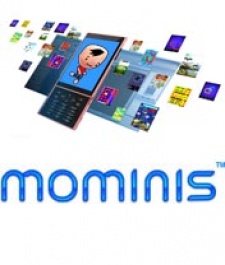Eyal Rabinovich is the company's co-founder and VP, Marketing.
Developing a successful game is not easy, but that's not news to anyone who's tried. It's a mix of creativity and the analytic, with the creative aspect outweighing the other elements.
As with anything creative, there is no exact formula. And yet, after producing and distributing a large number of mobile games, I can definitely say that many of the successful games in the market - and specifically our successful games - share a common denominator.
We've spent a significant amount of time analysing what gives a game that 'it' quality. We then codified those qualities into five game creation guidelines, which we follow internally and provide externally to our developers.
According to our analysts, here are the main attributes that have helped us reached 30 million users and be awarded the Top Developer badge by Google's Android Team.
1. Choose a successful core gameplay
The core gameplay is the skeleton of your game. It only refers to the main mechanics of the game, which you should be able to describe using geometrical shapes, without referring to graphics and the look and feel. If you can't, you're probably describing something else.
Although we encourage developers to innovate and invent new core gameplay, you will probably notice that most developers don't. If you don't invent a new gameplay, it's best to select a core gameplay that is already successful on mobile. So, do your research. Go to the top of the charts and check out the games that have made it to the top, get the best ratings and generate most revenue.
Selecting an existing core gameplay does not mean you don't have to innovate - you definitely still do. But you do that by adding additional elements on top of the ones you're using or by changing the existing ones.
If you do choose to invent your own core gameplay, that's great, we need developers like you that strive to reinvent the wheel; however, by doing so you are taking a bigger risk - something to keep in mind.
2. Use high quality graphics
Mobile games have come a long way since the iPhone came out in 2007 and so have their graphics. But as opposed to other platforms, mobile games are marketed to the masses, which means that your graphics have to appeal to a range of age groups and both genders.
We see many independent developers who nostalgically go for the look and feel of 8-bit games - and while some of them end up succeeding in the market, most don't.
We always recommend creating 2D stylised and lifelike graphics. This type of graphic appeals to the majority of players, doesn't cost a lot to create and is easier to polish.
3. Don't forget about branding
It may sound obvious, but many developers tend to leave this part to the end or simply forget about it altogether. If you already have the core gameplay and the basic graphics of the game in place (main characters, a few backgrounds and some components of the UI), you are at a point where you need to create a tight concept for your game.
The game's branding - its storyboard, main characters and their characteristics - is intertwined with almost every aspect of your game. It's how you build progression, establish various power ups, and determine the items you have in your store - you do plan to have a store, right? Which then of course leads to the creation of your game's marketing or branding elements; its icon, screenshots and video.
It's better to start thinking of branding in the earlier stages if you want to avoid redoing a significant portion of your work.
4. Progression, progression, progression
All of the points we've mentioned will get the attention of players. But to keep them playing, you have to think about the progression of your game. Good progression contains all of the following elements
- Easy Balancing remember, mobile players are mostly causal players who are not necessarily gamers, so start with easier levels of difficulty.
- Leveling Gradually increase the level of difficulty.
- Progress map This isn't necessarily a map, rather a visualisation of the player's progress. You must have one.
- Unveiling new features Most players are looking for diversity and get bored quickly. To keep them engaged it's important to continually expose them to new elements.
5. Emotional attachment
We all know that we have to make our users feel something. The problem is that sometimes the wrong emotion is invoked, like frustration due to a bug in the game. The idea here is to carefully select positive emotions that complement each other.
Most of the successful games we see are funny, have lots of happy moments, and also boost your adrenaline. Our game Ninja Chicken - a side scroller - evokes all of these emotions. The brand is funny; every time you pass an obstacle you feel relieved, which creates a happy moment; and of course the progression together with the acceleration boosts your adrenaline.
Conclusion
Those are the big-ticket guidelines to keep in mind. Of course there are many points I didn't get to such as dynamic tutorials and the out-of-the-box experience, both crucial for mobile games.
But I hope I managed to convey some of the insight we've accumulated at MoMinis.
And last, but not least, the final piece of advice I can give you is to keep the user experience at the core of everything you do. We can create as many rules and guidelines as we want to, but if the experience isn't good, it's not going to work.
You can find out more about the MoMinis mobile gaming platform here.






















